This is a preprint.
A predominately pulmonary activation of complement in a mouse model of severe COVID-19
- PMID: 38895461
- PMCID: PMC11185570
- DOI: 10.1101/2024.05.31.596892
A predominately pulmonary activation of complement in a mouse model of severe COVID-19
Abstract
Evidence from in vitro studies and observational human disease data suggest the complement system plays a significant role in SARS-CoV-2 pathogenesis, although how complement dysregulation develops in patients with severe COVID-19 is unknown. Here, using a mouse-adapted SARS-CoV-2 virus (SARS2-N501YMA30) and a mouse model of severe COVID-19, we identify significant serologic and pulmonary complement activation following infection. We observed C3 activation in airway and alveolar epithelia, and in pulmonary vascular endothelia. Our evidence suggests that while the alternative pathway is the primary route of complement activation, components of both the alternative and classical pathways are produced locally by respiratory epithelial cells following infection, and increased in primary cultures of human airway epithelia in response to cytokine exposure. This locally generated complement response appears to precede and subsequently drive lung injury and inflammation. Results from this mouse model recapitulate findings in humans, which suggest sex-specific variance in complement activation, with predilection for increased C3 activity in males, a finding that may correlate with more severe disease. Our findings indicate that complement activation is a defining feature of severe COVID-19 in mice and lay the foundation for further investigation into the role of complement in COVID-19.
Keywords: COVID-19; SARS-CoV-2; complement; inflammation; pulmonary.
Conflict of interest statement
The authors have declared that no conflict of interest exists.
Figures

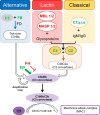
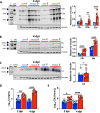
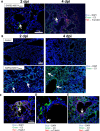
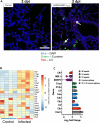

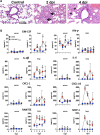
Similar articles
-
Complement is primarily activated in the lung in a mouse model of severe COVID-19.iScience. 2025 Feb 1;28(3):111930. doi: 10.1016/j.isci.2025.111930. eCollection 2025 Mar 21. iScience. 2025. PMID: 40034849 Free PMC article.
-
Complement Activation Contributes to Severe Acute Respiratory Syndrome Coronavirus Pathogenesis.mBio. 2018 Oct 9;9(5):e01753-18. doi: 10.1128/mBio.01753-18. mBio. 2018. PMID: 30301856 Free PMC article.
-
Local Complement Contributes to Pathogenic Activation of Lung Endothelial Cells in SARS-CoV-2 Infection.Am J Respir Cell Mol Biol. 2023 Aug;69(2):210-219. doi: 10.1165/rcmb.2022-0373OC. Am J Respir Cell Mol Biol. 2023. PMID: 37071849 Free PMC article.
-
Targeting complement cascade: an alternative strategy for COVID-19.3 Biotech. 2020 Nov;10(11):479. doi: 10.1007/s13205-020-02464-2. Epub 2020 Oct 19. 3 Biotech. 2020. PMID: 33088671 Free PMC article. Review.
-
The case of complement activation in COVID-19 multiorgan impact.Kidney Int. 2020 Aug;98(2):314-322. doi: 10.1016/j.kint.2020.05.013. Epub 2020 May 24. Kidney Int. 2020. PMID: 32461141 Free PMC article. Review.
References
Publication types
Grants and funding
LinkOut - more resources
Full Text Sources
Molecular Biology Databases
Miscellaneous
